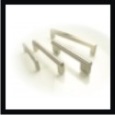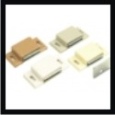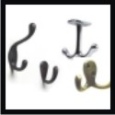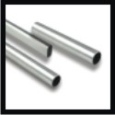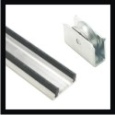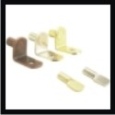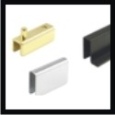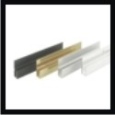



Dimensions and measurements are subject to change. Predrilling hole locations is Not recommended. Please fabricate or machine your components only to an approved sample. Seller assumes no risk for direct or indirect damages as a result of the Buyer, its agents or end users predrilling, fabricating or machining in advance of receipt of product.
CARE & MAINTENACE
All surfaces, over time, collect varying amounts of soil and dirt depending on how and where they are used. These factors and the materials being cleaned, determine the frequency of cleaning required and cleaning treatments.
STAINLESS STEEL:
Stainless steel is known for its ability to be a clean surface that resists corrosion and rust. Stainless steel products play an active role in improving the hygiene, durability, and resistance to corrosion and scratches in restaurants, kitchens, schools, health centers etc.
CLEANING PROCEDURES OF STAINLESS STEEL: Having no pores or cracks to harbor dirt, grime or bacteria, warm water and a cloth is recommended for most cleaning. For stronger cleaning a mild detergent (dish washing liquid) and warm water followed by a clean water rinse (to prevent staining and spotting) and towel dry. Fingerprints are one of the biggest complaints about stainless steel, but can be taken care of by using glass cleaner or household ammonia, followed by a thorough rinse and towel dry. For stains and scratches, or the need to polish your stainless steel, a stainless steel cleaner may be a good option. Be sure to rinse thoroughly and towel dry.
CLEANING PRECAUTIONS: Do not use abrasive cleaners that will scratch the surface. Do not use cleaners containing chlorine. Do not use steel wool/brushes as these products will scratch the surface and leave small particles which rust and can stain the product surface. Do not forget to rinse and towel dry.
ANODIZED ALUMINUM:
Anodized architectural finishes are very durable. However, even the best finishes need a little care.
As with any finished material, aluminum requires reasonable care prior to and during installation and periodic cleaning and maintenance after installation. Anodized aluminum is very resistant to corrosion, discoloration and wear, but can be marred by harsh chemicals, abuse or neglect.
CLEANING PROCEDURES OF ANODIZED MATERIAL: For light soils, flush the surface with water using moderate pressure. If soil remains present after air-drying the surface, scrubbing with a soft cloth, brush or sponge can be tried. If soils still adhere, then a mild soap can be used with brushing or sponging. Washing should be done with uniform pressure, first horizontally then vertically, followed by a clean water rinse.
CLEANING PRECAUTIONS: Do not use acidic, abrasive or alkaline cleaners as they may destroy the finish. Cleaning hot, sun-heated surfaces should be avoided since possible chemical reactions will be accelerated and cleaning non-uniformity could occur. Strong organic solvents may extract stain producing chemicals from sealants and may affect the function of the sealants.
TOUCH-UP: The anodized surface is aluminum oxide, which is generally harder than sandpaper. Some rub marks on an anodized surface can be removed with a mild abrasive pad such as the Scotch-Brite pad prior to touch-up painting. Touch-up paint is supplied in small aerosols or bottles with a built in brush for easy application and should be applied very sparingly. It is intended to cover small blemishes or to touch-up exposed cut ends on fabricated parts. It is not intended for use on large areas and is not as hard nor performs the same as the baked on finishes.
POWDER COAT:
Powder Coat finishes are very durable. Over time, with exposure to the elements, powder coatings may show signs of weathering such as loss of gloss, chalking and slight color change. A simple regular clean will minimize the effects of weathering and will remove dirt, grime and other build-up detrimental to all powder coatings.
CLEANING PROCEDURES OF POWDER COAT MATERIAL: Washing using a solution of warm water and non-abrasive, pH neutral detergent solution. Surfaces should be thoroughly rinsed after cleaning to remove all residues. All surfaces should be cleaned using a soft cloth or sponge.
CLEANING PRECAUTIONS: Do not use solvents such as thinners or solutions containing chlorinated hydrocarbons, esters, ketones, acidic, or abrasives, as they may destroy the finish.
JE FAQ 1.2.1 - Developed by href="http://www.webhostings.in" title="Web hosting companies" target="_blank"> Web hosting companies

